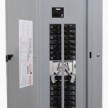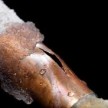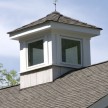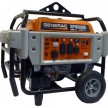Emergency Home Generator
Installing a DEWALT DXGN14000 Generator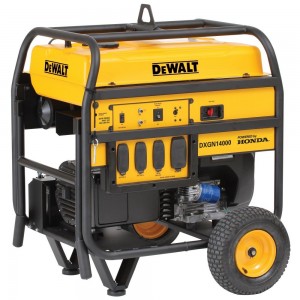
Power outages and brownouts inevitably result in substantial losses forbusiness owners and residents. These past few years weather patterns have caused more and more power outages. Installing An emergency home generator can be an invaluable investment. A generator ensures that you will have a reliable source of electricity whenever and wherever you need it.
When the power goes out the most economical way to supply power during that power outage is to use a “portable” generator. Even for homeowners, an emergency generator ensures life can go on even when normal power fails. Set aside the fact that losing your electricity cramps your lifestyle, consider the cost of spoiled food in refrigerators and freezers add to that heating and water pipes that can freeze and burst during cold temperatures and you can have a recipe for an expensive disaster.
With a generator your heat, lights and appliances can be used.
What Is A Generator?
A generator provides electrical power when the primary power supply failure due to factors such as inclement weather, computer malfunction or human error. The primary functional advantage of a generator is to supply electrical power.
The manner in which a generator operates is very similar to that of an automobile, and the mechanical components work in much the same fashion. A generator uses a heavy-duty alternator which reacts to the engine’s mechanical energy and converts it into electrical power.
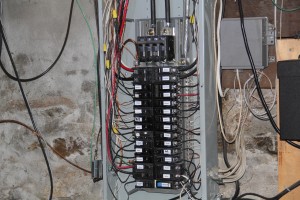
Generators are an awesome tool to provide power to construction sites for AC-powered tools. Most portable generators are gasoline-powered, and a few run on diesel, and some models have multi-fuel capabilities, running on gasoline, propane or natural gas.
Standby Generator Systems
An emergency home generator standby system is a permanent mounted, hard wired generator that can automatically restore power to a house in about 20 seconds. When the power goes out, the generator automatically starts and continues to run until power is restored. You can choose a generator that delivers enough power for the entire house (including air conditioning) or go with a smaller unit and power a few selected circuits, like the refrigerator, sump pump, furnace fan and several lights for basic survival.
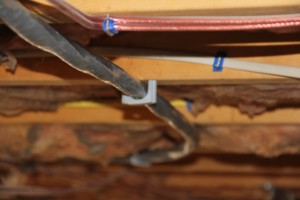
These all-weather generators are installed outside the home and are wired through an automatic transfer switch connected to the main electrical panel. The use of an automatic transfer switch is required when generators are connected to home wiring.
Emergency home generator systems can be fueled by natural gas, LP gas or diesel fuel. Many models can be connected to the home’s natural gas line, eliminating the need to fill fuel tanks. Standby system capacities range from 6,000 Watts up to 40,000 Watts and more, and start automatically-even if you are not home. These generators can be programmed to turn on once a week to charge the battery as well.
Connecting YourEmergency Home Generator:
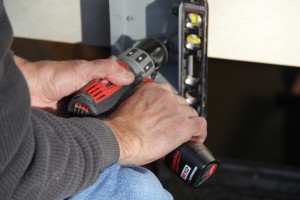
When considering the purchase of a emergency home generator, you should also think about installing a transfer switch device or a panel interlock kit. A professionally installed transfer switche or panel interlock kit makes using your generator easy and safe to use.
What Is A Transfer Switch?
A transfer switch is an electrical device that is installed next to your electrical panel in your home. It connects to the circuits in your electrical panel that you wish to power during an electrical outage. This allows you to power these circuits by connecting the generator to the transfer switch, instead of having to run extension cords to various items.
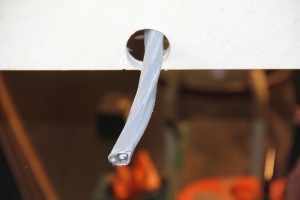
Why Do I Need A Transfer Switch?
A transfer switch is required by the National Electric Code for any connection of power to a home and is is the only safe way to permanently connect the generator to your home.
The main breaker in the transfer switch switches the power source from utility to generator. The house cannot be connected to both the generator and utility power at the same time – the main breaker transfers power from one source to the other.
The transfer switch automatically detects power and adjust the circuits as necessary. When power is restored, disconnect your emergency home generator and turn it off.
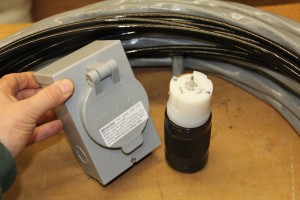
You can instruct the electricianto assign each circuit to a different load. For example, you might want to power the furnace, well pump, refrigerator, and some lights. You can assign different circuits to power each appliance or room.
A transfer switch isolates these selected circuits your home from the power lines which prevents electrical back-feed to go out of the house and back down the utility lines where it could electrocute a utility worker. Back-feed can not only damage the generator, but has the potential to cause a house fire.
Items such as a furnace or a well pump cannot be connected to a generator with an extension cord. A transfer switch is the easiest and safest way to connect these items to the generator.
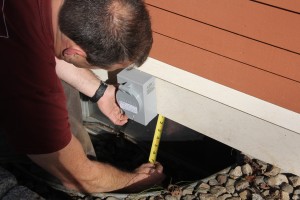
What Is A Panel Interlock Kit?
A cost effective option to the spending the money on a transfer switch is to have an electrician install a panel interlock kit at a quarter of the cost.
A panel interlock is a metal mechanical plate that has slots designed to prevent the main breaker and the generator breaker from being turned on at the same time.
The Interlock kit allows you to safely disconnect your panel from the utility feed and switch it over to the generator which is being fed through a new generator breaker. The Interlock kit allows only one of these feed systems to be operational at the same time which prevents both sources from being connected together.
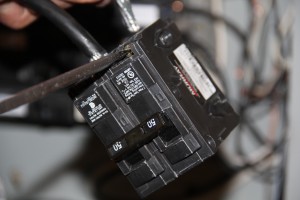
Without an interlock or a transfer switch there is always a chance that someone could forget to open the main breaker resulting in a danger of electrocution to utility workers, damaging your generator and the risk of a house fire.
The panel interlock kit allows you to connect your portable generator to your electrical system safely without danger of back-feed to utility power lines. Panel interlock kits when installed properly meet the National Electrical Code and the National Fire Protection Code.
What I like about the interlock is that I can use anything in your home because all the circuits in your home can be activated through the breakers in your panel.
Once the Inter-Lock kit is installed it is quick and easy to transfer power from utility to generator in case of a power outage. The panel interlock is a more manual option but still very effective.
Interlock procedure: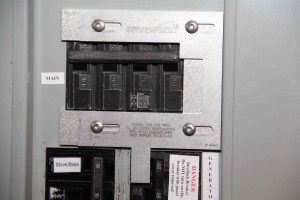
- Turn main breaker to the “OFF” position
- Turn all branch circuits to the “OFF” position
- Slide Interlock plate up (down in some kits)
- Connect and start generator
- Turn generator breaker to the “ON” position
- Turn on essential circuits one at a time. Allow appliances to start before engaging next circuit
- Reverse procedure when power returns
Connecting DEWALT 14000 Watt Generator To The House:
To connect the DEWALT DXGN14000 generator we purchased and installed a Reliance Controls 50 Amp power inlet box designed for outdoor use and had an electrician hard-wire it directly to the electrical service with 50 Amp circuit protected by a panel interlock kit. I installed the 50 Amp box over a 24″ deep basement window well to allow more clearance during snow conditions.
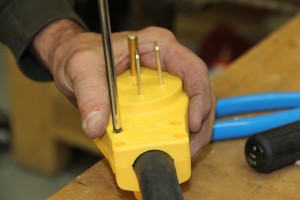
We stored the generator inside a pool shed that was designed with outstanding ventilation for a gas fired pool heater. The plan was to use this pool shed to protect the generator from the elements, deflect some of thegenerator noise away from the house and allowed us a same place to install a grounding rod and cable.
When the generator is needed we will simply roll it into the pool shed doorway, prop the door and connect the generator to the house with a 50 Amp power cord.
The 50 amp extension cord plugs into the generator and the weather proof 50 amp inlet box to complete the connection.
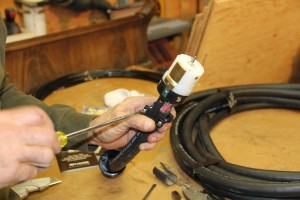
CONTINUE READING PAGE 2 – Installing An Emergency Generator



